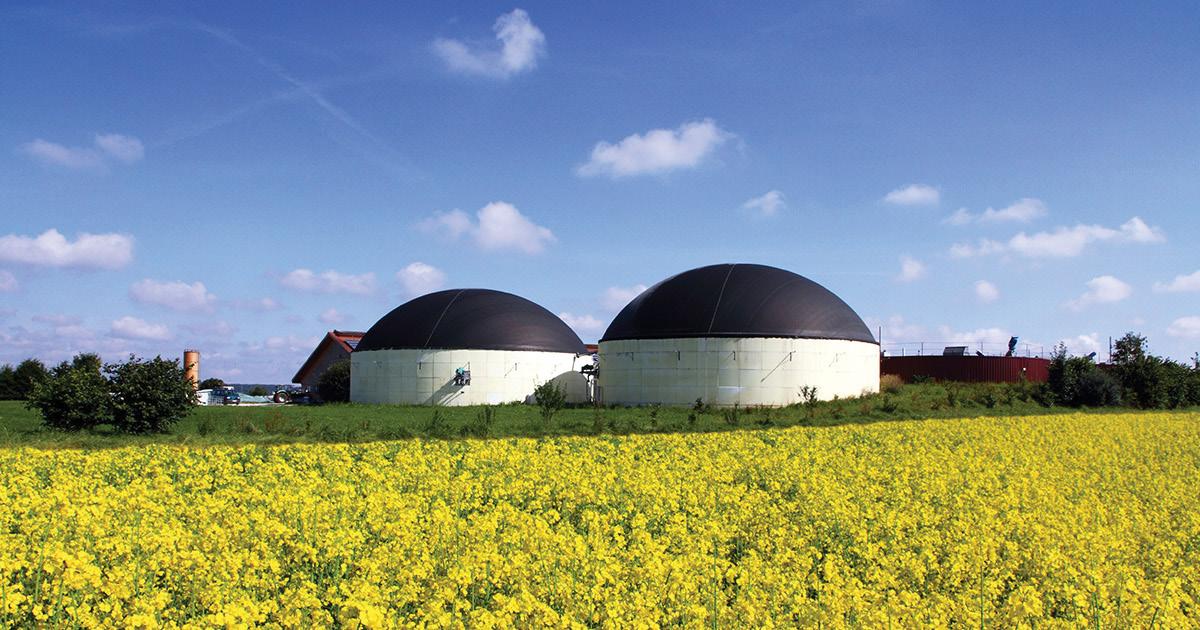HEAT PUMPS
2020 CONSTRUCTION TRENDS: SMART FIFTH GENERATION DISTRICT HEATING Matthew Trewhella, Managing Director of Kensa Contracting
T
he UK Government recently committed to a 2050 net zero carbon target in an effort to limit the worst effects of global warming. With the introduction of a Future Homes Standard mandating the end of fossil-fuel heating systems in all new build homes from 2025, house-builders, planning, and building control are in a prime position to encourage low-carbon developments utilising eco-friendly building techniques and innovations in renewable technology to achieve our carbon ambitions.
LOWERING CARBON The Future Homes Standard, effectively the follow up to the “ban the gas boiler” announcement, sets out what we can expect from our buildings from 2025. And how we are going to get there is notably the “transitional arrangements” in the proposed Future Homes Standard, which could see an almost overnight ban on oil, LPG and electric as soon as mid 2020; under the Standard gas will get much harder and heat pumps many times easier to introduce into new-build homes. The proposed new SAP calculation is intended to allow assessment of the effects of the Future Homes Consultation proposed options. One of the headline grabbing proposals in SAP 10.1 is the proposed carbon factor for electricity at 0.136 - this will mean ground source heat pumps have carbon factors of 0.030 - 0.045 compared to a gas boiler at 0.23. That’s a saving of more than 80% in carbon emissions just by switching heating to ground source heat pumps. With lots of councils across the country declaring climate emergencies, many of which commit to carbon neutral targets ahead of the UK’s 2050 ambition, a growing number of new build developments are already embracing the low-carbon approach. In adherence to the Committee for Climate Change’s recommendation that homes should make use of low-carbon sources of heating, in particular electricallypowered heat pumps that produce no point-of-use emissions, and the new National Design Guide, which singles out ground source heat pumps and district heating systems as recommended heating
24
technology, Bristol is witness to a number of new build schemes utilising this ultra-low carbon, non-air polluting, and low-cost heating solution to support its 2030 carbon neutral pledge. 133 new homes at Ashton Rise are being built by Bristol City Council using the high efficiency Sig iHouse solution, and heated by individual Kensa ground source heat pumps connected to a shared ground loop array of boreholes. The installation would see each home making lifetime carbon savings of 30 tonnes compared to individual gas boilers, whilst also removing all local NOx emissions, ensuring local air quality is not impacted by the choice of heating system. Across the city, a further 50 affordable homes are being constructed to PassivHaus standards by United Living in partnership with United Communities and the Bristol Community Land Trust. The energy efficient ‘self-finish’ properties will each feature a mini Kensa Shoebox ground source heat pump connected to an ambient shared ground loop array. Complementing the low-carbon ground source heat pumps will be a MVHR (mechanical vented heat recovery) system, making the homes even more energy efficient and further lowering fuel bills for the residents. The homes will be constructed using a single skin Porotherm block, cutting construction time and delivering improved thermal properties over traditional construction. Solar PV panels further reduce costs, whilst supporting a green transport plan which features electric car charging points, a car share scheme and improved pedestrian and cycle access. Communal green space around the homes is also being created with a dedicated and protected green corridor for biodiversity and wildlife including bats, birds, bees and other insects. Evidently the push by local planning authorities to place energy efficiency and carbon saving requirements on buildings that go beyond the requirements of the national building regulations is resulting in some ground-breaking ultra-low carbon, energy efficient developments. Two notable examples are: 1. Bristol City Council require developers to reduce CO2 emissions by 20% and to follow
ENERGY MANAGER MAGAZINE • MAY 2020
a heat hierarchy that encourages renewable and low carbon heating. 2. The Greater London Authority requires developers to reduce CO2 emissions for new developments by 35% (10% must be from fabric improvements) compared to current building regulations. The Future Homes Standard consultation proposes reductions of 20% (option 1) or 31% (option 2) in CO2 emissions for all new dwellings, nationwide. However, it is also consulting on whether to remove the ability for local planning departments to impose deeper reductions via the planning process. This threatens the planning process being a major influence to impact CO2 emissions and achieve the UKs zero carbon targets. The London Energy Transformation Initiative (LETI) views the Standards proposals for Part L 2020 as a backward step ‘in a climate where we need a huge leap forward’, stating that ‘local authorities will lose the ability to meet their climate emergency zero carbon commitments if they are stripped of their powers to go above and beyond the new Part L’. Whilst the Future Homes Standard offers many significant highlights, the lowlight of lower carbon compliance targets is troubling. Kensa has addressed these in its response to the consultation, which is currently under review.
GROUND SOURCE HEAT PUMPS By connecting new developments to a ‘fifth generation’ shared ground loop array feeding individual ground source heat pumps in each new home, housebuilders are not only delivering a sustainable infrastructure to rival and replace the gas grid, they are providing a long-term low-cost lowcarbon heating, and cooling, solution. The rapid recent decarbonisation of the electricity grid and the high efficiency of ground source heat pumps now means that this route to the large scale electrification of heating shows significantly more promise than the decarbonisation of the gas grid. Let’s explore three innovations which coupled with ground













